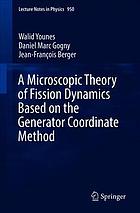

Most ebook files are in PDF format, so you can easily read them using various software such as Foxit Reader or directly on the Google Chrome browser.
Some ebook files are released by publishers in other formats such as .awz, .mobi, .epub, .fb2, etc. You may need to install specific software to read these formats on mobile/PC, such as Calibre.
Please read the tutorial at this link: https://ebookbell.com/faq
We offer FREE conversion to the popular formats you request; however, this may take some time. Therefore, right after payment, please email us, and we will try to provide the service as quickly as possible.
For some exceptional file formats or broken links (if any), please refrain from opening any disputes. Instead, email us first, and we will try to assist within a maximum of 6 hours.
EbookBell Team

4.0
16 reviewsThis book introduces a quantum-mechanical description of the nuclear fission process from an initial compound state to scission. Issues like the relevant degrees of freedom throughout the process, the way of coupling collective and intrinsic degrees during the fission process, and how a nucleus divides into two separate daughters in a quantum-mechanical description where its wave function can be non-local, are currently being investigated through a variety of theoretical, computational, and experimental techniques.
The term “microscopic” in this context refers to an approach that starts from protons, neutrons, and an effective (i.e., in-medium) interaction between them. The form of this interaction is inspired by more fundamental theories of nuclear matter, but still contains parameters that have to be adjusted to data. Thus, this microscopic approach is far from complete, but sufficient progress has been made to warrant taking stock of what has been accomplished so far.
The aim is to provide, in a pedagogical and comprehensive manner, one specific approach to the fission problem, originally developed at the CEA Bruyères-le-Châtel Laboratory in France.
Intended as a reference for advanced graduate students and researchers in fission theory as well as for practitioners in the field, it includes illustrative examples throughout the text to make it easier for the reader to understand, implement, and verify the formalism presented.